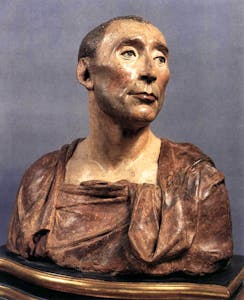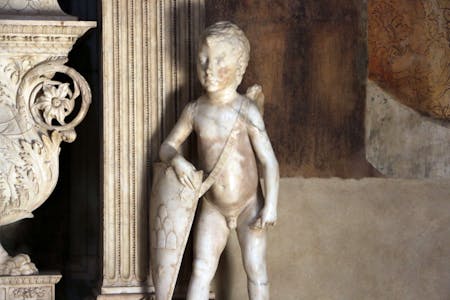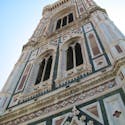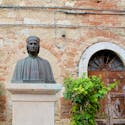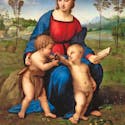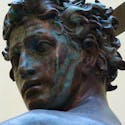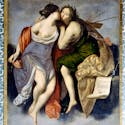One of the greatest Florentine sculptors of Renaissance, Desiderio da Settignano stands out for his "gentle style" and his graceful artworks, renowned for the delicacy and softness with which have been chiseled. Even though he died young, Desiderio created many masterpieces in marble as the famous bust of St. John Martelli.
Desiderio collaborated with Antonio Rossellino and Donatello,of whom he imitated and improved the style. Most of his artworks are displayed in Florence museums, but also in main museums around the world such as the Louvre Museum in Paris and the National Gallery in Washington. In 2007, Florence celebrated the great sculptor Desiderio with a great exhibition at the Bargello Museum.
His Life
Desiderio de Bartolomeo di Francesco was born in Settignano, near Florence, in 1430 from a family of stone carvers. Schooled by architect and sculptor Bernardo Rossellino, he joined the Guild of Stone and Wood Craftsmen of the city around 1453. Few years later he opens his own workshop near Santa Trinita.
He starts working at the age when he was twenty years old and becomes famous soon for his workmanship. He works a lot and creates the monumental Tomb of Beata Villana and Tomb of chancellor Carlo Marsuppini in Santa Croce Church. This work surprised his contemporaries for its beauty as Vasari describes: "not just at that time it surprised, but even today it is a tunning artwork".
Desiderio dies suddenly in 1464 in Florence, leaving unfinished a beautiful Magdalene penitent for the Church of Santa Trinita.
His works
This famous Florentine sculptor is generally considered one of the most important artists of Renaissance in 15th century. Desiderio da Settignano is renowned for his "gentle style" that is characterized by an extraordinary realism and delicate workmanship.
Desiderio studies and works alongside Donatello and learns the "stiacciato" style - bas-relief technique with the minimum depth. He becomes a virtuoso of marble chiseling many masterpieces such as the Madonna Panciatichi (Bargello Museum), the Tondo Arconati Visconti (Louvre Museum in Paris) and the Madonna Foulc (Museum of Art in Philadelphia).
In his workshop, together with his brother Geri, Desiderio realizes also decorative sculptures, as well as friezes and embellishments for churches and chapels in Florence. The Tomb of Beata Villana, commissioned by Bernardo Rossellino for the Church of Santa Maria Novella, and the magnificent Tomb of Chancellor Carlo Marsuppini in the Basilica of Santa Croce are two great examples of his decorative workmanship.
Desiderio is famous overall for his marble busts of children and women. These works are clear example of his gentle workmanship in chiseling marble. Among his most famous artworks there are two portraits at the Bargello, the famous Marietta Strozzi in Berlin and St.Constance at Louvre and also known as the "Beautiful Florentine girl".
The artworks by Desiderio da Settignano have to be listed in Renaissance sculpture masterpieces. His workmanship can be perfectly resumed by Vasari's words: "Desiderio, in his utmost simplicity, created artworks with divine workmanship."
Desiderio in Florence
Born near Florence, he never left the city. Most of his artworks are displayed in churches and museums of Florence, even though some others are in famous international museums.
At Bargello Museum you'll find Desiderio's Bust of Niccolò Uzzano (formerly attributed to Donatello), a Young St. John, Bust of a Lady and Bust of a Young Boy.
In Santa Croce Church stand the Tomb of Chancellor Carlo Marsuppini and a Woman's Bust in marble.
In Santa Maria Novella Church is the Tomb of Beata Villana.
In the Church of San Lorenzo is displayed the Altar of the Sacrament, over which stands a beautiful Little Angel of St.Lawrence depicting the blessing Child standing with the thorned crown in his hands.
